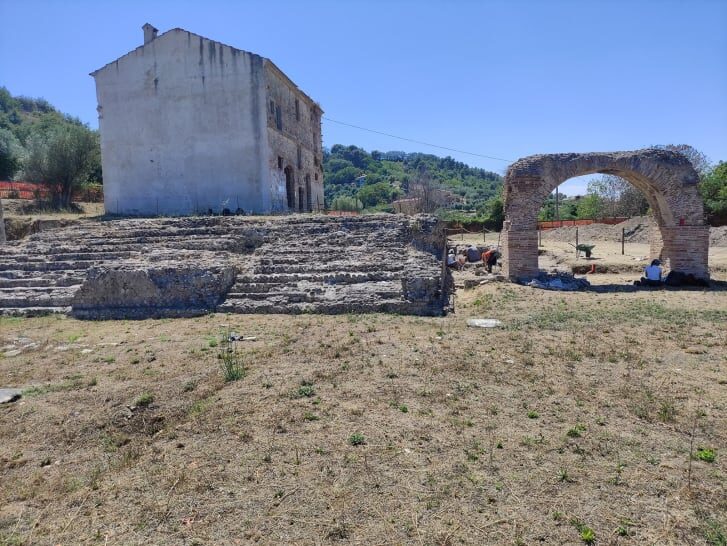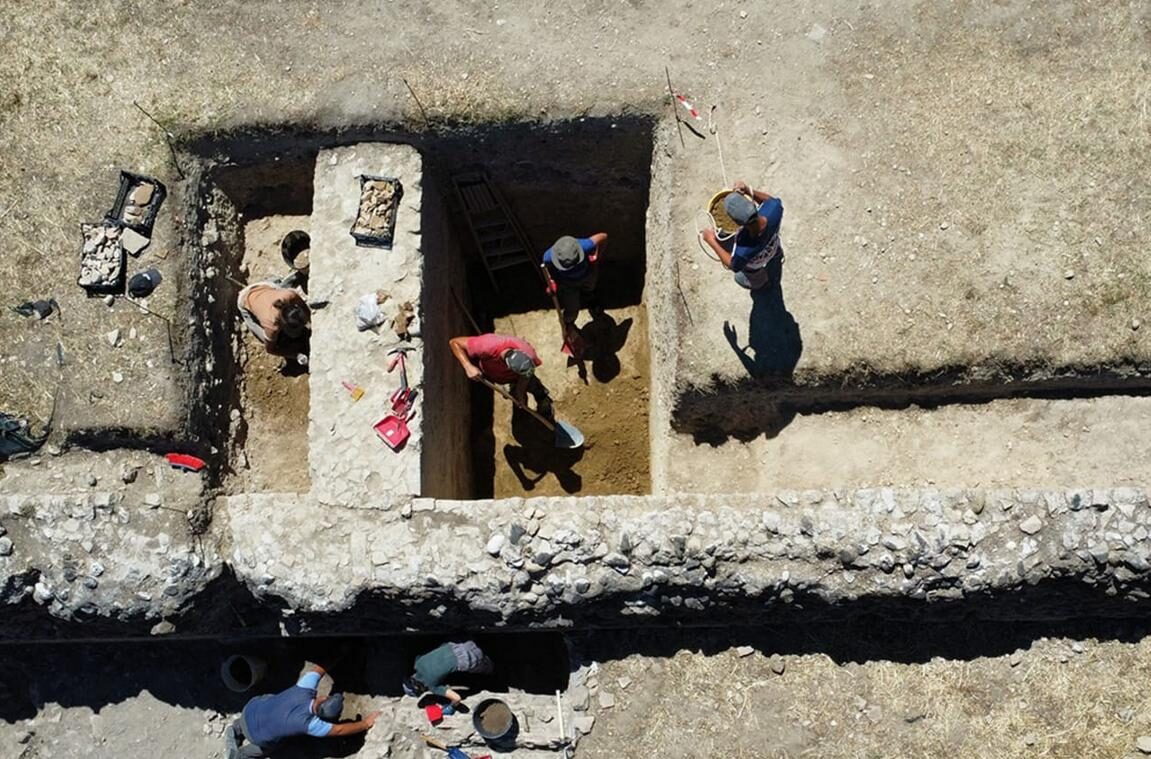In the study carried out by archaeologists, they found the frescoed walls and ceiling of the 2000-year-old temple painted in yellow, blue, red, black and green tones. Also found in the temple of Cupra, walls decorated with floral wreaths, tiny palm paintings, and candlesticks.
Archaeologist Marco Giglio (research project coordinator of the field and Professor at the University of Naples L'Orientale) said, "It is extremely rare to find ancient Roman temples whose interiors are covered with paintings."

Giglio stated that "The Cupra Temple will also help us understand the engineering techniques used during the Roman period." "As a result of the detailed examination of the decorative models on the walls, we will be able to understand the economic situation of the people".
Excavation, led by the University of Naples L'Orientale and Cupra Marittima (city council), began in July. It is known that the temple of Cupra was built at the beginning of the first century AD. It is a structure that helped the Romans to control the Adriatic coast and maritime trade routes.
According to Giglio, the wall paintings of the building are unusual. Decorations in the "Third Pompeian" style were made to decorate the homes of wealthy people in Pompeii and Rome. It is thought that the ceiling of the Cupra temple was sky blue, and the lower part of the walls was yellow. Candlestick and garland images are made with horizontal green bands on its walls. There are also black, red and yellow squares.
Ilaria Benetti (from Pisa and Livorno province) said, "It is very rare to find lightly damaged murals in this style because the paint deteriorates over time due to moisture and the walls are very likely to be damaged during excavation."
Giglio added, "The sky blue ceilings found in the Cupra temple are extremely rare. This rare structure leads us to believe that it was built to signify the dome of the sky and that the temple was built to honor a goddess."

Gilgio and his team were initially unable to pinpoint the appearance of the temple because the Temple of Cupra has undergone radical changes several times. The Roman emperor Hadrian provided financial support for the restoration of the temple due to the possibility of the temple's destruction in 127 AD. It is thought that for this purpose, he cut the painted walls of the Cupra temple and covered it with marble. As a result of this process, the original colored parts turned into powder. It then became the basis for new floors. Giglio "cited this as the reason why the pieces recovered at the Cupra temple were well preserved".
Hadrian added nine-metre-high columns with newly found ornate capitals, half-columns, and lion-headed roof dripstones to the Temple of Cupra.
Marbles and columns were demolished to be building materials. In the 19th century, the walls of the Cupra temple were also demolished to make room for a rural home that has since been abandoned.
Giglio stated that "the house was built by joining the walls of the sanctuary, so they were trying to understand whether it was better to restore it or burn it to save the temple completely."
Only one-fifth of the Cupra temple area has been excavated. It was stated that "it is quite difficult to know which ornaments and patterns will emerge". It was also said that the construction site works in the ancient Roman period can be understood with the remains to be found.








Comment: See also: Bronze Age settlement found under Roman bath complex at Corinth reveals spectacular finds